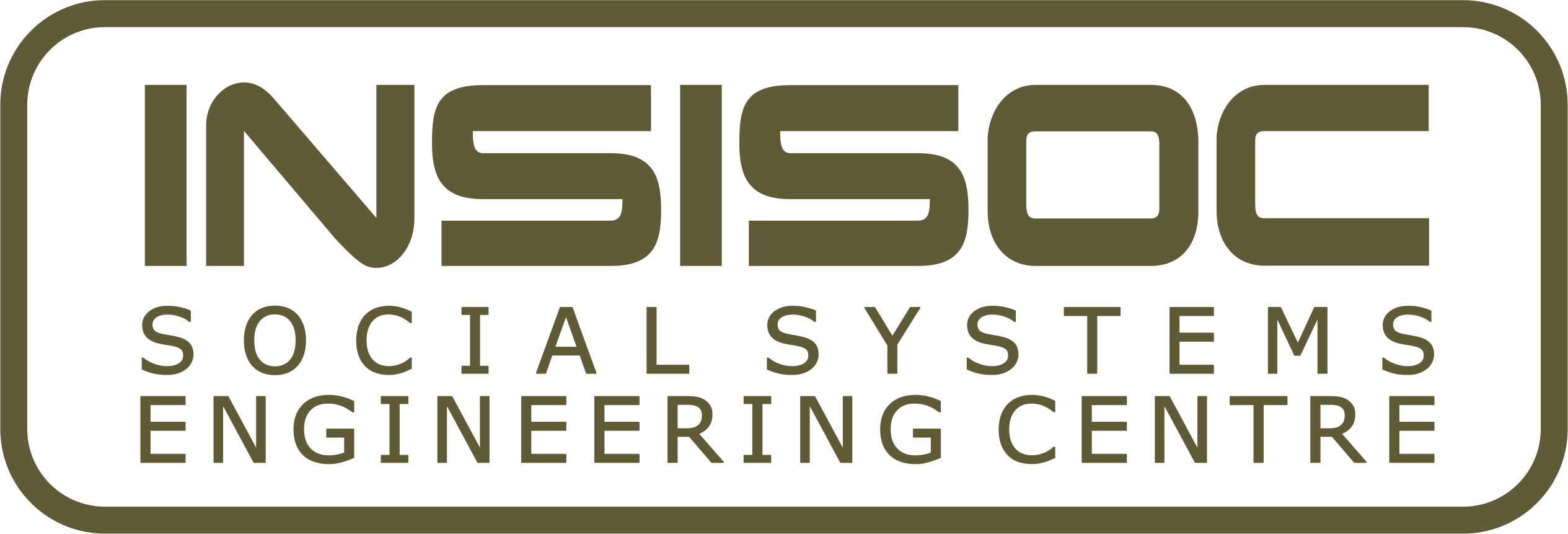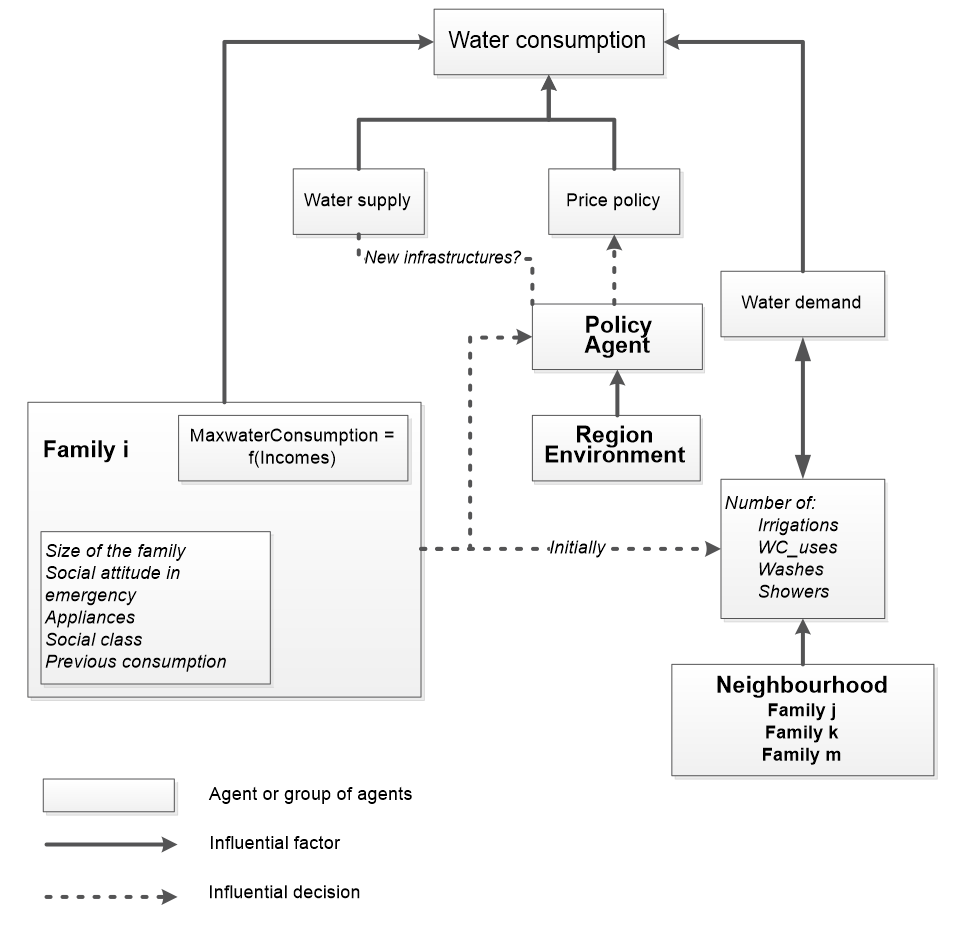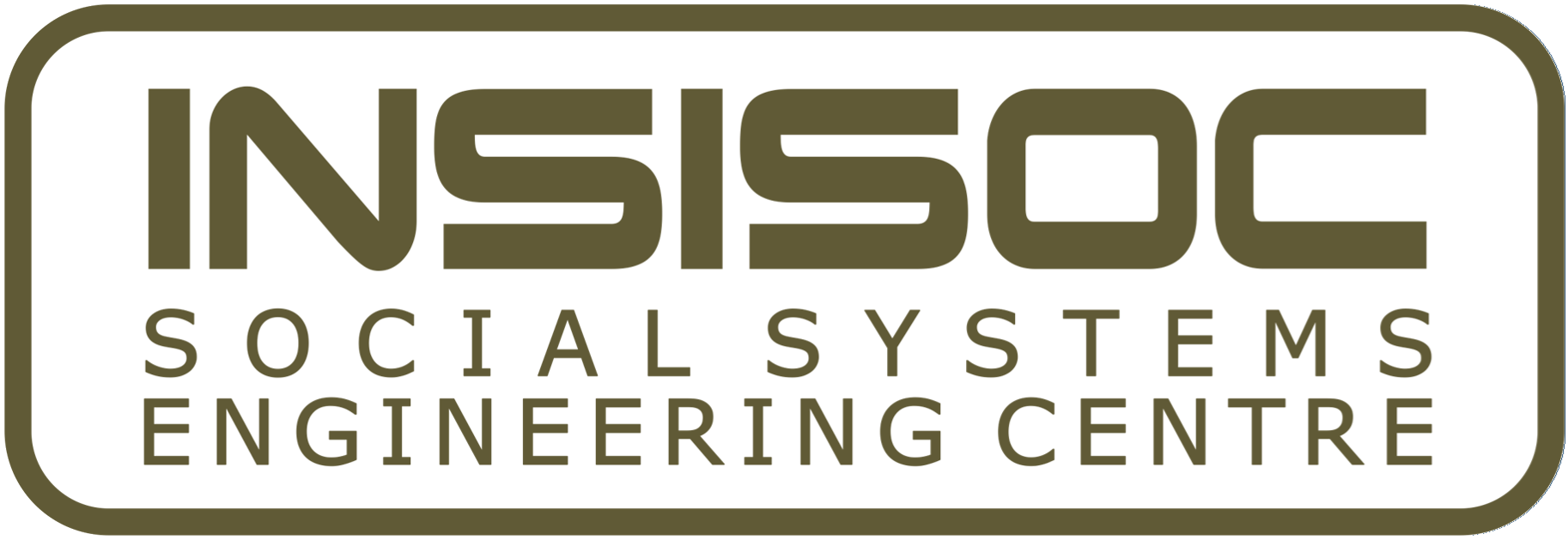The aim of this project was to justify and to illustrate with two case studies the use of agent-based modeling (ABM) as a modeling tool for domestic water management in metropolitan regions.
As opposed to traditional water planning models, which are usually based in consumption projections and supply-side policies, there is a growing agreement on the need to include a higher diversity of factors in the models, especially socioeconomic aspects, and to study natural resource models in an integrated fashion.
From a theoretical point of view, agent-based modeling offers a set of features that make it an especially suitable methodology to be used in this domain. This work revises the main advantages of this methodology and illustrates its practical application through two real cases: the FIRMABAR model (López-Paredes, A., Saurí, D., & Galán, J. M. 2005), designed to study domestic water management in the Barcelona Metropolitan Region, and the planned adaptation process of this model to the Valladolid Metropolitan Region, which is currently being carried out.
In this project we have underlined the practical importance and relevance of a spreading field of research: agent based modeling and simulation. In our opinion, using this methodology instead of other traditional modeling methods is justified by its realistic and intuitive computational representation of social phenomena, based on the direct correspondence between the entities we observe and the model we are studying. This approach permits building small computational laboratories to get a deeper understanding of the studied real systems.
This modeling approach facilitates a detailed representation of the individual participants in the system, capturing their heterogeneity and representing social processes with realism; it also allows the explicit representation of the space and the local interactions between agents. However, modelers have to pay a price for this series of advantages: agent based models are often analytically intractable and it is necessary to turn to simulation to study their behavior.
We have also underlined the possibilities of ABM to allow an interdisciplinary approach to model development and to integrate participatory processes with stakeholders. These two features, together with the current scientific agreement on the need of an integrated study of environmental issues (incorporating the human dimension to the physical and technological ones) make ABM especially suitable to be used as a modeling tool for water management.
We have presented a concise outline of two agent based models for urban water management. The first one was developed for the Barcelona Metropolitan Area and is made up of two linked sub-models, the territorial and the social model, implemented with Java-Swarm over cellular automata.
The second model substitutes a coarse grain abstraction of the region by a VisualMap GIS integrated with RePast libraries. GIS/ABM coupled techniques have a huge potential not only for exploring individual behaviors and their associated environments but for support assisting policy makers tools.


